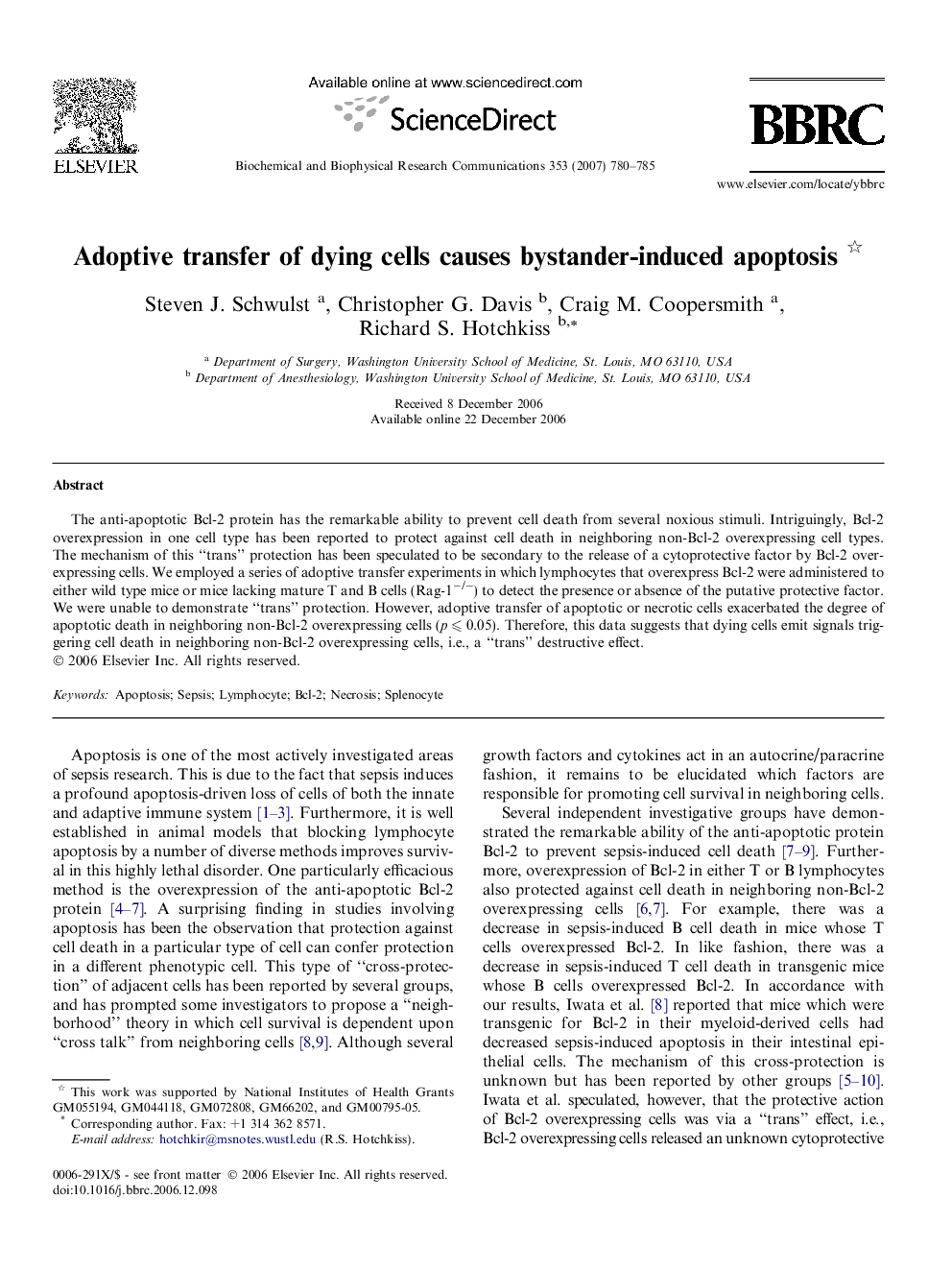| Article ID | Journal | Published Year | Pages | File Type |
|---|---|---|---|---|
| 1937682 | Biochemical and Biophysical Research Communications | 2007 | 6 Pages |
Abstract
The anti-apoptotic Bcl-2 protein has the remarkable ability to prevent cell death from several noxious stimuli. Intriguingly, Bcl-2 overexpression in one cell type has been reported to protect against cell death in neighboring non-Bcl-2 overexpressing cell types. The mechanism of this “trans” protection has been speculated to be secondary to the release of a cytoprotective factor by Bcl-2 overexpressing cells. We employed a series of adoptive transfer experiments in which lymphocytes that overexpress Bcl-2 were administered to either wild type mice or mice lacking mature T and B cells (Rag-1â/â) to detect the presence or absence of the putative protective factor. We were unable to demonstrate “trans” protection. However, adoptive transfer of apoptotic or necrotic cells exacerbated the degree of apoptotic death in neighboring non-Bcl-2 overexpressing cells (p ⩽ 0.05). Therefore, this data suggests that dying cells emit signals triggering cell death in neighboring non-Bcl-2 overexpressing cells, i.e., a “trans” destructive effect.
Related Topics
Life Sciences
Biochemistry, Genetics and Molecular Biology
Biochemistry
Authors
Steven J. Schwulst, Christopher G. Davis, Craig M. Coopersmith, Richard S. Hotchkiss,
